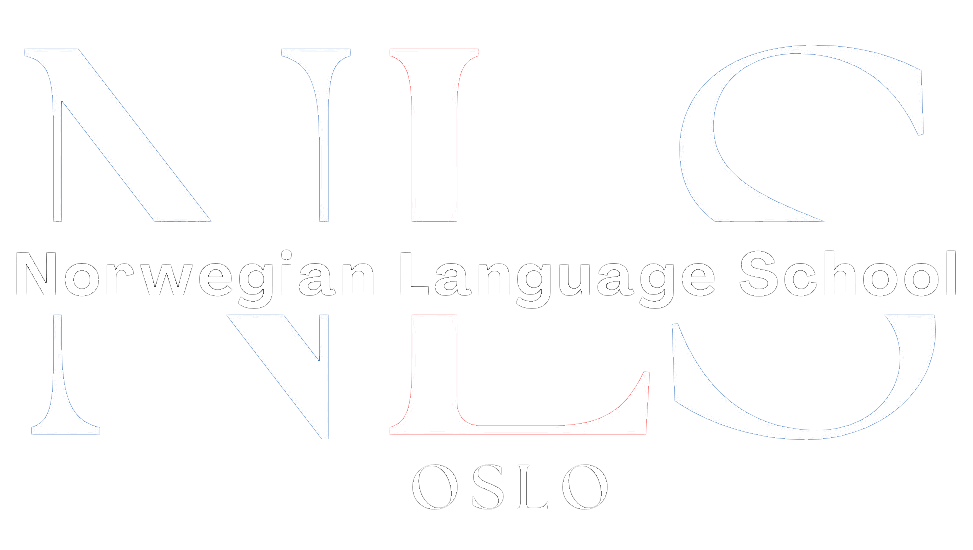
Learn English Grammar Through Stories
Have you ever wondered why some people seem to effortlessly master the English language, while others struggle to grasp even the most basic grammar rules? The secret may lie in the power of storytelling. Discover how harnessing the narrative arts can unlock the mysteries of English grammar and transform your language learning journey.
Storytelling has long been recognised as a powerful tool for language acquisition, and the benefits extend far beyond simply entertaining the listener. By weaving grammar lessons into captivating tales, learners can engage more deeply with the language, building a stronger foundation for long-term retention and fluency.
Table of Contents
ToggleKey Takeaways
- Explore the psychological and neurological benefits of using stories to learn English grammar
- Understand how narratives can foster emotional connections and enhance memory
- Discover a natural, engaging approach to mastering grammar through storytelling
- Learn about effective techniques for selecting and utilising stories in your language learning
- Uncover digital tools and interactive exercises to make story-based grammar practice fun and rewarding
Understanding the Power of Storytelling in Language Learning
Storytelling holds a unique power in the realm of language learning. Cognitive research has consistently demonstrated the remarkable capacity of stories to enhance memory retention and facilitate narrative-based learning. When learners engage with captivating tales, their brains become deeply immersed, triggering a heightened state of emotional engagement that can profoundly impact the language acquisition process.
How Stories Enhance Memory and Retention
The human brain is wired to remember stories more effectively than isolated facts or grammatical rules. Narratives provide a contextual framework that enables learners to associate new linguistic concepts with relatable characters, events, and emotions. This cognitive learning approach allows information to be encoded more deeply, leading to improved long-term retention and recall.
The Brain’s Response to Narrative Learning
Neurological studies have revealed that when individuals listen to or read a story, their brains undergo a remarkable transformation. The language processing centres light up, mirroring the same neural activity as if the listener were experiencing the events first-hand. This narrative-based learning triggers a more holistic, immersive learning experience, engaging multiple sensory and emotional pathways simultaneously.
Building Emotional Connections Through Stories
Stories possess a unique ability to forge meaningful emotional connections between the learner and the language. By tapping into universal human experiences, narratives can evoke feelings of empathy, joy, or even nostalgia, ultimately creating a more emotionally engaging and memorable learning journey. This emotional investment can significantly enhance the learner’s motivation, retention, and overall language proficiency.
| Cognitive Learning Aspect | Benefits of Storytelling |
|---|---|
| Memory Retention | Stories provide a contextual framework that aids in the encoding and recall of new linguistic concepts. |
| Brain Engagement | Narrative-based learning triggers a more holistic, immersive experience, engaging multiple sensory and emotional pathways. |
| Emotional Connection | Storytelling can evoke feelings and create meaningful emotional associations, enhancing the learner’s motivation and language acquisition. |
Learn English Grammar Through Stories: A Natural Approach
Mastering English grammar need not be a daunting task. Instead of traditional rote learning, the natural language acquisition approach advocates learning grammar through immersive storytelling. This method mirrors the way we effortlessly acquire our native tongue during childhood, allowing for deeper contextual understanding and long-lasting retention.
The power of stories lies in their ability to create meaningful connections. When grammar is presented within the framework of a narrative, it becomes more than just a set of rules to memorise. Students can grasp the practical applications of grammatical concepts as they witness them in action, enhancing their overall comprehension and fluency.
Contextual grammar learning, facilitated by storytelling, fosters a more natural and intuitive understanding of the language. Rather than simply memorising verb tenses or sentence structures, students internalize these elements through repeated exposure within the story’s unfolding events and dialogue. This immersive approach mirrors the way children acquire their native tongue, leading to more sustainable learning outcomes.
| Approach | Focus | Learning Outcome |
|---|---|---|
| Traditional Grammar Instruction | Memorisation of rules and structures | Fragmented understanding, limited application |
| Natural Language Acquisition through Storytelling | Contextual learning of grammar in a narrative | Deeper comprehension, improved fluency and retention |
By harnessing the power of storytelling, learners can naturally acquire English grammar, building a solid foundation for fluent and contextual communication. This approach not only makes the learning process more engaging but also mirrors the way we instinctively master our native languages, unlocking the door to truly immersive learning.
Common Grammar Patterns in Short Stories
Delving into the captivating world of short stories offers a treasure trove of insights into the nuances of the English language. These literary gems showcase a diverse array of grammar patterns that can be harnessed to enhance your language learning journey.
Past Tense Narration Techniques
One of the hallmarks of short stories is the prevalent use of narrative tenses, particularly the past tense. By examining how authors weave intricate tales using past tense structures, you can gain a deeper understanding of how to effectively convey events, actions, and experiences in your own writing.
Direct and Indirect Speech in Storytelling
Short stories often seamlessly integrate reported speech, allowing characters to express themselves through both direct and indirect quotations. Exploring these techniques can strengthen your command of dialogue and help you navigate the subtle differences between direct and indirect speech structures.
Descriptive Language and Grammar Structures
The captivating power of short stories lies in their ability to paint vivid mental pictures through the use of descriptive writing. By studying the specific grammar patterns and vocabulary employed in these descriptions, you can develop a more nuanced understanding of how to craft compelling and visually evocative narratives.
| Grammar Pattern | Example from Short Stories | Explanation |
|---|---|---|
| Past Continuous Tense | “She was walking down the street, lost in thought.” | The past continuous tense is used to describe an ongoing action or state in the past. |
| Indirect Speech | “She said that she was feeling tired.” | Indirect speech is used to report what someone has said without using their exact words. |
| Adjectival Phrases | “The old, weathered house stood tall against the horizon.” | Adjectival phrases add descriptive detail and depth to the narrative. |
By exploring these common grammar patterns found in short stories, you can unlock a wealth of language-learning opportunities and develop a more nuanced understanding of the English language in its natural, narrative context.
Selecting the Right Stories for Grammar Practice
When it comes to learning English grammar through stories, the selection of the right stories is crucial. The reading level assessment, genre selection, and cultural relevance of the chosen stories can significantly impact the effectiveness of the learning process. By carefully considering these factors, you can ensure that your grammar practice is both engaging and tailored to your specific needs.
Assessing Reading Level
One of the first steps in selecting appropriate stories for grammar practice is to assess the reading level. Choose stories that are within your current language proficiency, ensuring that the vocabulary and sentence structures are neither too challenging nor too simplistic. This will help you focus on the grammar patterns without being overwhelmed by the overall complexity of the text.
Exploring Genre Preferences
The genre of the stories you select can also influence the learning experience. Consider your personal interests and preferences. Do you enjoy reading fiction, such as short stories or novels? Or do you prefer non-fiction, like biographies or historical accounts? Selecting stories that align with your genre preferences can increase your engagement and motivation to practise grammar within the context of the narrative.
Considering Cultural Relevance
The cultural relevance of the stories you choose can also play a significant role in your learning experience. Look for stories that reflect the diversity of the English-speaking world, exposing you to different perspectives and cultural nuances. This can not only enhance your understanding of the language but also broaden your cultural awareness and appreciation.
By carefully considering the reading level, genre selection, and cultural relevance of the stories you choose, you can create a engaging and effective grammar practice routine that aligns with your individual needs and preferences. This holistic approach to story selection will undoubtedly strengthen your grasp of English grammar while fostering a deeper appreciation for the power of storytelling.
Interactive Story-Based Grammar Exercises
Mastering English grammar can be a daunting task, but by incorporating interactive exercises that utilise the power of storytelling, the learning process becomes more engaging and effective. This section explores a range of dynamic activities that combine grammar practice with the captivating elements of narrative.
Role-playing and Dialogue Practice
One of the most interactive approaches to grammar learning is through role-play and dialogue exercises. Students can work in pairs or small groups to act out scenarios, improvising conversations that showcase their understanding of key grammar structures, such as verb tenses, sentence structure, and discourse markers. This not only reinforces grammatical concepts but also develops their interactive learning and creative writing skills.
Story Continuation Activities
Building on the narrative foundation, story continuation exercises challenge students to extend a given plot, dialogue, or character arc, while applying appropriate grammar games. By seamlessly integrating grammar into the creative writing process, learners deepen their comprehension and gain a more natural, contextual understanding of language mechanics.
Grammar Pattern Recognition Games
To further enhance grammar mastery, interactive games that focus on pattern recognition can be highly effective. Students might be asked to identify recurring grammatical structures within a short story, analyse the use of specific tenses or voices, or even rearrange jumbled sentences to create coherent, grammatically correct passages. These role-play exercises foster critical thinking and problem-solving skills, making grammar learning a dynamic and engaging experience.
By incorporating these diverse, story-based grammar exercises, educators can create a learning environment that is both intellectually stimulating and genuinely enjoyable for students. Through the integration of interactive learning, creative writing, and grammar games, the acquisition of English grammar can become a captivating and memorably journey.
Using Digital Tools for Story-Based Learning
In today’s digital landscape, there is a wealth of resources and tools that can enhance the process of learning English grammar through stories. From innovative language learning apps to engaging digital storytelling platforms, the future of story-based learning is undoubtedly digital.
One key advantage of incorporating e-learning into grammar instruction is the ability to provide interactive and immersive experiences. Many online resources offer a range of exercises and activities that allow learners to actively engage with the narrative, reinforcing grammatical concepts through practical application.
- Language learning apps like Babbel and Duolingo seamlessly integrate grammar lessons into story-driven gameplay, making the learning process more enjoyable and effective.
- Digital storytelling platforms, such as Adobe Spark and Storybird, enable learners to create their own narratives, experimenting with different grammar structures and sentence styles.
- Interactive storybooks and e-books often incorporate grammar-focused quizzes and comprehension checks, providing immediate feedback and reinforcement.
By embracing the power of technology, educators and learners can unlock a world of possibilities in story-based grammar learning. These digital tools offer a dynamic and engaging way to explore the nuances of the English language, all while fostering a love for storytelling.
Creating Your Own Grammar Practice Stories
Mastering English grammar can be a challenging task, but incorporating creative writing into your language learning journey can make the process more engaging and effective. In this section, we’ll explore how to create your own grammar practice stories, unlocking a world of self-study techniques that can elevate your language skills.
Story Structure Templates
Crafting a compelling narrative is the foundation of grammar-focused writing. Begin by exploring various story structure templates that provide a framework for your creative endeavours. These templates can guide you through the essential elements of a captivating story, such as character development, plot progression, and narrative voice. By familiarising yourself with these templates, you’ll be able to weave grammar structures seamlessly into your tales.
Grammar Focus Points
When creating your own grammar practice stories, it’s crucial to identify the specific grammar focus points you wish to reinforce. Whether it’s mastering the past tense, navigating direct and indirect speech, or honing your descriptive language, targeting these areas will ensure your stories are not only entertaining but also pedagogically valuable.
Writing Practice Guidelines
- Establish a regular writing practice routine to build your creative writing skills.
- Experiment with different narrative styles and perspectives to broaden your storytelling abilities.
- Engage in peer review and feedback to refine your grammar-focused stories.
- Celebrate your progress by sharing your stories with fellow language learners.
By following these guidelines and tapping into your creative writing potential, you’ll not only enhance your grammar mastery but also cultivate a deeper appreciation for the power of storytelling in language learning.
Tracking Progress and Measuring Success
As you embark on your journey of learning English grammar through stories, it’s crucial to have a solid understanding of how to track your progress and measure your success. By regularly assessing your language proficiency and monitoring your learning milestones, you can fine-tune your approach, celebrate your achievements, and stay motivated throughout your learning experience.
Language Proficiency Tests: Assessing Your Skills
Periodically taking language proficiency tests can provide valuable insights into your overall language abilities. These tests, such as the Cambridge English Exams or the IELTS, offer a comprehensive evaluation of your reading, writing, listening, and speaking skills. By comparing your test scores over time, you can gauge your progress and identify areas that require more attention.
Self-Assessment: Reflecting on Your Journey
Alongside formal testing, regular self-assessment can be a powerful tool for tracking your progress. Reflect on your confidence in using specific grammar structures, your ability to comprehend and produce complex sentences, and your overall fluency in storytelling. Keep a learning journal to document your observations and celebrate your milestones.
Progress Monitoring: Celebrating Small Victories
Recognise and celebrate your learning milestones, no matter how small they may seem. This could be mastering a challenging grammar pattern, effortlessly incorporating direct and indirect speech in your stories, or demonstrating a marked improvement in your descriptive language. Acknowledging these achievements will fuel your motivation and reinforce the progress you’ve made.
By embracing a multifaceted approach to progress tracking and success measurement, you’ll gain a deeper understanding of your language proficiency, identify areas for growth, and maintain a positive mindset throughout your English grammar learning journey.
Conclusion
In conclusion, the journey of mastering English grammar through the power of storytelling has been an enlightening and rewarding experience. By harnessing the natural connection between language and narrative, learners can cement their grammar mastery, enhance their language fluency, and embark on a lifetime of lifelong learning.
The strategic use of short stories, interactive exercises, and digital tools has demonstrated the profound impact that storytelling benefits can have on language acquisition. Learners have not only strengthened their grasp of grammar patterns but have also fostered deeper emotional connections with the language, ultimately leading to a more natural and effective approach to communication.
As you continue your pursuit of English language proficiency, remember to embrace the power of narrative, experiment with new story-based techniques, and celebrate your progress along the way. With dedication and a passion for learning, you will unlock the true potential of English grammar mastery and unlock a world of linguistic fluency and cultural understanding.
FAQ
What is the benefit of learning English grammar through stories?
How do stories improve memory and language acquisition?
What types of grammar patterns are commonly found in short stories?
How can I select appropriate stories for my grammar practice?
What interactive exercises can I use to practice grammar through stories?
What digital tools are available for story-based grammar learning?
How can I create my own grammar practice stories?
How can I track my progress and measure success in learning grammar through stories?
If you want to learn Norwegian, you can register for classes here. We look forward to hearing from you and helping you become fluent in Norwegian.






